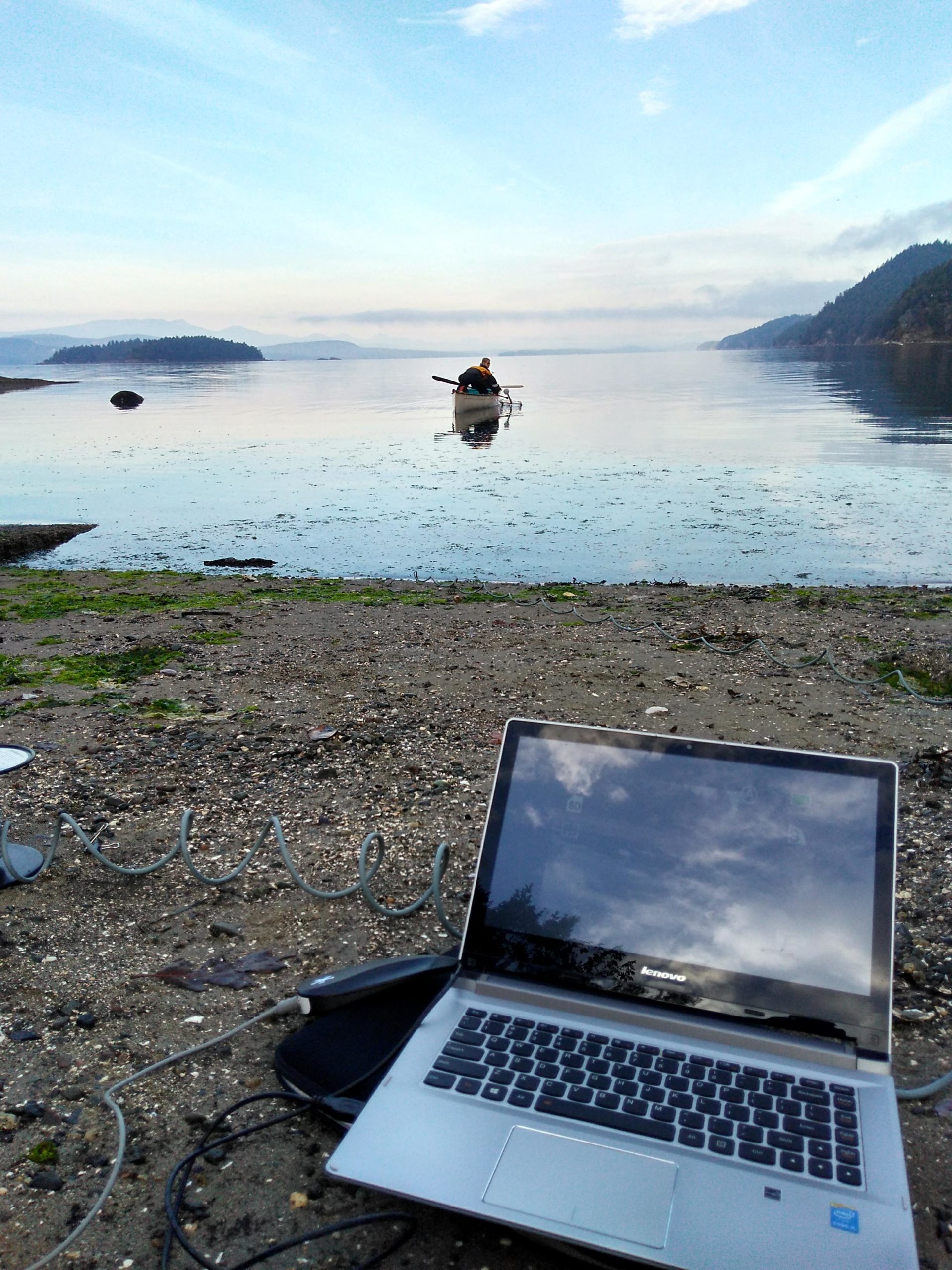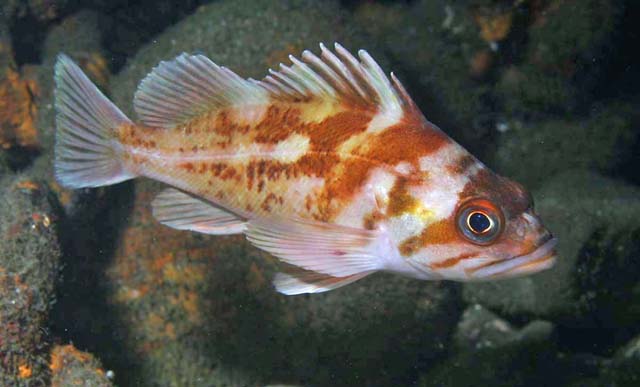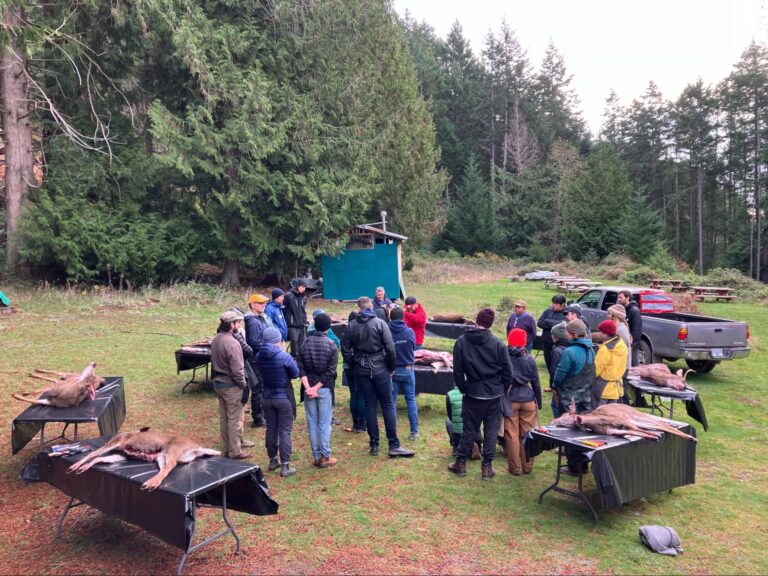
A live feed connection to shore allowed students to see subtidal creatures in action beneath the waves!
Throughout October, four grade 7/8 classes from Rockheights Middle School joined us for a special edition of the Conservancy’s popular marine program, “Marine Investigations.”
Meet Desiree – Marine Conservation Specialist
The Conservancy had the privilege of working with Desiree Bulger, a University of Victoria Masters candidate in Marine Biology for this series of marine education programs. With Desirée’s help (as well as some on and offshore muscle provided by the GCA’s past and present interns Sonia Voicescu and Maud Zwagers) students onshore viewed subtidal creatures under the sea in real time.
Using a custom-made PVC bait arm and camera trap, Desiree dropped the camera off the side of the canoe near a rocky shelf. Although the day’s strong winds and high tide made it difficult to navigate the channel, one group of students had the awesome experience of watching a sizeable red rock crab grasp onto the bait arm trying to get a nibble at the tasty prawn pellets inside! We also saw purple sea star colonies stuck to the sandstone shelf.
In the upcoming months, Desiree will be using data gathered from the four education days for her masters thesis to determine how effective the marine camera was at teaching students about subtidal species.
Looking into the Blue – Marine Technology Facilitated Education
The subtidal zone – unlike the intertidal zone – is always underwater. This makes it difficult for scientists and the public alike to observe subtidal plants and animals in their natural underwater habitats. Thankfully, the advancement of marine technology has increased accessibility to these areas allowing for new discoveries about subtidal animal behaviour, as well as the impact that humans and climate change have on these vulnerable habitats.
Marine technology could present itself as an excellent learning tool not only for young students and scientific professionals, but also for those engaged in marine recreation, fishing and commercial transportation. Think about it – what better tool is there than an underwater camera to foster appreciation for the mysterious and beautiful deep blue without having to get wet? For Galiano, underwater cameras may also be useful for public outreach about Rockfish Conservation Areas: regions where the Conservancy, in partnership with the University of Victoria, monitors at risk rockfish populations.

A Copper Rockfish – This fascinating subtidal fish can live over 100 years and swim to depths of 2,000 feet! Rapid expansion of its swim bladder (“barotrauma”) when it is fished out of the depths can severely injure or kill Rockfish. This is why its important not to line fish in Rockfish Conservation Areas.
The Conservancy is currently investigating how to integrate marine camera technology into its marine education programs and Rockfish Conservation projects.
See the Gulf Islands Underwater – Dive Video
Click the video below to view Desiree’s dive video near Galiano. This video highlights local subtidal species we can find right off our our Salish Sea shores.


